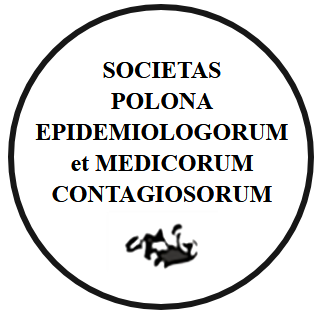ABSTRACT
The aim of the study was to evaluate the results of the preventive and therapeutic programme addressed to adolescents aged 17 and 18, based on a comparison of the state of dentition prior to and after the completion of the programme.
MATERIAL AND METHODS: All 44 adolescents from the City of Skierniewice and the surrounding area who applied for enrolment were included in the programme. Based on clinical examination, the prevalence of active caries, caries intensity expressed by mean values of the DMFT (decayed, missing, filled teeth) Index including D, M, and F components and the Dental Treatment (DT) Index F/(D + F) were assessed. All parameters were presented according to sex.
RESULTS: Active caries was observed in 34 (77.3%) patients. Caries was more frequently detected in boys (82.6%) than in girls (71.4%). The value of the Caries Intensity Index, DMF, equalled 12.05 and was significantly higher (p<0.01) in boys than in girls: 13.73 ± 3.63 and 10.06 ± 3.42. In the examined group of 17- and 18-year-olds, the mean number of decayed teeth D (6.31) had the highest mean value, followed by the mean number of filled teeth F (4.26), the mean number of extracted (missing) teeth M (1.48) being the lowest. The values of the F Index were statistically significantly higher (t=2.570; p=0.0195) in boys as compared to girls (5.26 ± 2.69 vs. 3.13 ± 2.83). Mean value the Dental Treatment (DT) Index (F/D+F) appeared to be higher in the group of boys than in girls: 0.431 ± 0.182 and 0.358 ± 0.126, respectively. After the completion of the programme, all adolescents studied achieved the value of the Dental Treatment Index equalling 1.
CONCLUSIONS: Dental examination qualifying 17- and 18-year old adolescents in Skierniewice to the preventive and therapeutic programme detected numerous foci of active caries. Implementation of the programme allowed to effectively treat the teeth of the adolescents participating in the project and to develop proper hygiene and dietary habits.
STRESZCZENIE
Celem pracy była ocena wyników programu profilaktyczno-leczniczego, skierowanego do młodzieży w wieku 17 i 18 lat, na podstawie porównania stanu uzębienia przed i po realizacji programu.
MATERIAŁ I METODY: Do programu przyjęto wszystkich zgłaszających się, czyli 44 nastolatków z miasta Skierniewice i okolic. Na podstawie badania klinicznego oceniono częstość występowania aktywnej próchnicy, intensywność próchnicy wyrażoną za pomocą wskaźnika PUW z uwzględnieniem składowych P, U i W oraz wskaźnik leczenia W/(P+W). Wszystkie parametry przedstawiono z uwzględnieniem płci.
WYNIKI: Aktywną próchnicę zaobserwowano u 34 (77,3%) badanych. Próchnicę częściej stwierdzono u chłopców (82,6%) niż dziewcząt (71,4%). Wartość wskaźnika intensywności próchnicy PUW równała się 12,05 i była istotnie wyższa (p<0,01) u chłopców niż u dziewcząt: odpowiednio 13,73 ± 3,63 i 10,06 ± 3,42. W badanej grupie 17 i 18-latków najwyższą średnią wartość przyjęła średnia liczba zębów z próchnicą P - 6,31, następnie średnia liczba zębów wypełnionych W 4,26, najmniejsza była średnia liczba zębów usuniętych U - 1,48. Wartości wskaźnika W była statystycznie istotnie wyższa (t=2,570; p=0,0195) u chłopców niż u dziewcząt (5,26 ± 2,69 vs 3,13 ± 2,83). Średnia wartość wskaźnika leczenia WL (W/W+P) była wyższa w grupie chłopców niż w grupie dziewcząt. Odpowiednie średnie wynoszą: 0,431 ± 0,182 i 0,358 ± 0,126. Po zakończeniu programu wszyscy badani osiągnęli wartość wskaźnika leczenia wynoszącą 1.
WNIOSKI: Badania kwalifikujące 17 i 18 –letnią młodzież w Skierniewicach do programu profilaktyczno-leczniczego ujawniły liczne ogniska aktywnej próchnicy. Realizacja programu pozwoliła, na skuteczne leczenie uzębienia osób uczestniczących w projekcie oraz ukształtowanie prawidłowych nawyków higieniczno-dietetycznych.
You can change cookies settings in your browser. Restricted use of cookies in the browser configuration may affect some functionalities of the website.





